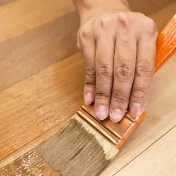Whether you own a log home, run a sawmill operation, or simply enjoy the aesthetic appeal of solid wood furniture, splitting logs can pose a serious and expensive headache if not properly addressed.
However, with the right techniques and regular maintenance, you can help protect your valuable lumber investments from the insidious forces that cause wood to crack and break down prematurely.

Log splitting is a widespread yet often overlooked issue in forestry, woodworking, and construction industries.
While attractive at first glance, untreated logs left exposed to moisture fluctuations and temperature extremes will deteriorate much faster as splits multiply over time.
Beyond aesthetic concerns, structural integrity is compromised, wasting materials and requiring replacements or repairs.
For commercial sawyers and mills, log splitting translates directly to financial losses if inventory is damaged before processing.
Even seasoned homeowners can see the structural beams of log cabins crack under subtle but constant physical stresses.
This article serves as a comprehensive guide to understanding the root causes of log splitting and implementing a prevention strategy tailored to any woodworking or construction application.
We’ll explore the biological, mechanical and environmental factors behind wood failure, along with proven methods for controlling moisture, protecting surfaces and inspecting for issues.
Real-world case studies demonstrate techniques used by leading professionals, while guidance on ongoing maintenance ensures long-term protection of wood assets.
With a growing appreciation for sustainable and natural building materials, demand is rising for solid hardwood and logs as decor, furniture stock and structural components.
However, proper care is needed upfront to maximize the performance and lifespan of these investments.
By learning to recognize and avoid the most common splitting triggers, you can keep your wood intact for decades to come.
The Living Architecture of Trees
To fully understand what causes wood to split, it’s important to first examine the makeup of trees themselves.
Whether used for lumber, landscaping or other applications, logs begin their existence as living, growing organisms. All trees share a fundamental anatomical structure designed for survival in diverse habitats.
At the core is wood – the conductive tissues that carry water and nutrients upward from the roots while also providing mechanical support.
This xylem tissue develops in concentric growth rings, with cells tapering as the tree expands each year. The older rings on the outside (heartwood) have lost their conductive properties over time.
Surrounding the wood is the bark – a protective barrier against disease, insects and external abrasion.
Its thickness varies greatly by species, from thin layers to thick plates of durable tissue. Underneath lies the vascular cambium, a layer of meristematic cells responsible for secondary growth.
Different tree genera exhibit unique cell structures, compositions and physical traits based on their evolutionary history and natural ranges.
Ring-porous hardwoods like oak develop large pores in earlywood and smaller pores in latewood, while diffuse-porous varieties like maple have uniformly distributed pores. Conifers like pine possess tracheids rather than true vessels.
Within growth rings, stark boundaries form between earlywood and latewood zones due to changes in cell size, wall thickness and chemical lignin content as seasons progress.
These boundaries pose natural lines of weakness where splits may initiate under stress. Variations in grain, from interlocked to diverse directional patterns, also impact fracture resistance.
By delving into tree biology, we gain insights into wood on a microscopic level – helping identify inherent structural vulnerabilities that must be managed properly to prevent cracking and failure in milled logs and lumber.
Understanding the living architectures of trees directly informs strategies to protect unprocessed wood assets.
The Perfect Storm for Splits
As we’ve seen, wood acquires stresses and weaknesses during a tree’s natural growth cycles. But it is the interplay of additional external forces that can ultimately trigger splitting events in felled logs if left unaddressed. Understanding these catalysts provides insight into prevention.
Tree Properties
Species like red oak with tight growth rings are inherently less stable than ring-porous types. Older trees may contain more degrade from knots and cavities. Processing logs with large piths invites splitting along the center.
Harvest Timing & Method
Felling in spring exposes fresh sapwood to daily swelling and shrinking as moisture levels fluctuate wildly. Brutal harvesting shear and impact wounds damage cellular structures.
Drying Process
Industrial kiln schedules that raise temperatures too fast create uneven tensions. Air-drying exposed to rain introduces wet-dry cycling stresses. Improperly stacked logs accumulate pressures on vulnerable edges.
Environmental Shifts
Sudden drops or spikes in humidity cause shrinkage and swelling that sapwood is not designed to withstand. Daily and seasonal temperature swings induce expansion and contraction strains.
Milling Factors
Saw stresses concentrate at saw marks, blade kernal holes and surfaces exposed through planning, sanding and shaping. Cut surfaces dry faster than internal core.
While individual factors pose slight risks, it is the combination and repetition of these various influences that generates the cumulative mechanical forces driving wood cell walls apart at their weakest points.
By recognizing each trigger, focused preventative measures can be deployed to greatly reduce their splitting impact.
Taming the Ebb and Flow of Moisture
Of all the splitting culprits, moisture fluctuations exert the greatest influence over wood stability due to the hygroscopic nature of cell walls.
Slight increases in water content allow these polysaccharide matrices to swell substantially in three dimensions. So controlling wood moisture levels is paramount.
Proper Drying & Storage
Kiln- and air-drying schedules minimized daily wet-dry cycling that induces stresses. Sealed, temperature-regulated spaces prevent rewetting of dried lumber. Good ventilation removes excess moisture.
Coatings & Sealants
Penetrating oil-based products like linseed oil protect surfaces while allowing vapor to escape, lowering swelling pressure. Synthetic sealants provide tougher moisture barriers without trapping in vapor. Wax coatings shed water.
Humidity Buffers
Two-way humidity control with desiccant and humidifier systems maintains equilibrium moisture content (EMC), avoiding both swelling and shrinkage. Some utilize thermostatic control for max protection.
Vapor Barriers
Plastic sheeting with sealed seams encapsulates lumber piles, creating microclimates with stabilized RH levels ideal for wood cell structure. Rim joists & vapor retarders regulate indoor environments.
Monitoring Tools
Accurate moisture meters enable preemptive responses by identifying wet stock early before damage occurs. Data logging models track long-term EMC conditions.
The most effective regimens layer these various techniques for multilayered protection reinforcing wood’s Hygroscopic stability against the unrelenting fluctuations of ambient moisture levels. Vigilant maintenance ensures defenses stay intact.
Buffering Against Temperature’s Damaging Effects
While moisture excursions exert the greatest force on wood materials, temperature variations also introduce significant expansion and contraction stresses that accumulate over time. Thermal defenses help minimize these tensions.
Thermal Properties of Wood
Different species and grain structures exhibit unique coefficients of linear expansion, influencing their dimensional responses to heat. Earlywood reacts more strongly than latewood.
Identifying Heat Issues
Checking wood surfaces for cracks or raised grain after extreme temperature swings helps pinpoint problems. Infrared cameras detect cold spots where tension may be concentrating.
Mitigation Through Insulation
Thermal barriers like sheathing, siding and roofing protect structural members within walls and floors. Closed-cell foam insulates vulnerable endgrain surfaces. Radiant barriers reflect heat.
Heating & Cooling Strategies
Maintaining an even, moderate internal environment within tolerance of wood EMC helps distribute stresses more uniformly. Zoned HVAC prevents temperature stratification.
Sun & Shade Control
Sectional sunscreens, shutters and landscaping shade exposed walls and roofing from full sun’s heat. Guiding air circulation helps disperse heat buildups near surfaces.
When combined with moisture regulation methods, multilayered temperature insulation and buffered environmental control create optimal stability conditions for dimensional wood products across all seasons and building exposures.
Ongoing vigilance safeguards past prevention investments.
Keeping a Close Eye – Inspection & Maintenance Are Key
While proper initial treatments are crucial, no wood asset maintains protection indefinitely without monitoring its ongoing condition. Periodic inspections catch small problems before they become costly and catch lapses in preventative measures.
Frequent Visual Checks
Trained eyes examining wood surfaces weekly catch minor checks and raised grain before deep splits form. Particular attention is given to areas exposed to most moisture or sunlight.
Advanced Screening Tools
Moisture meters verify field treated and sealed surfaces hold effective barriers. Infrared cameras detect subtle temperature variances indicative of tension hotspots.
Comprehensive Evaluations
Seasoned inspectors thoroughly probe wood interiors with probes and borers, looking for degradation signs invisible outside like mold growth. Structural members are load-tested.
Updated Preservation
Reapplication of protective coatings restores barrier functions degraded by weathering, within manufacturer recoat timelines. Seams are resealed.
Contingency Plans
Predetermined response protocols mitigate newly identified issues, whether minor surface touch-ups or large member replacements. Logs are moved if needed.
Record Keeping
Digital asset logs catalog treatments, inspection findings and maintenance actions over time to optimize strategies and catch deteriorating patterns early.
Constant preventative wood care demands continuous diligence. Proactive inspection and selective remediation ensure maximum performance protection for wooden materials.
Real World Successes – Case Studies from the Field
Beyond theoretical techniques, real log structure and mill cases provide invaluable examples of prevention plans in action. Their lessons reinforce tried-and-true approaches.
Montana Log Home
A large custom log cabin combats severe climate swings through seasonal coating refresh, sealed crawlspace, insulated furring strips behind siding and foundation vapor barrier. Not a single split in 15 years.
Idaho Sawmill
State-of-the-art kilns minimize drying stress at this facility through carefully programmed RH decrease. Condensation-sealed storage units maintain lumber EMC for processing on demand without compromising integrity.
Massachusetts Barn Restoration
Raised 19th century post-and-beam structure stabilized cracking beams through grafting splits, epoxy reinforcement and thermal break wrap. Infrared scans verify stress relief before re-erection.
Oklahoma Forestry Cooperative
Small woodlot owners partner for economy of scale moisture mitigation. Members share portable buffer humidification system on rotation between harvest cycles and milling windows according to drying schedule.
Washington Log Home Community
Entire neighborhood of custom log homes services vapor control and exterior coating maintenance contracts through an HOA. Infractions are penalized to uphold community prevention standards over time.
Consistently minimizing disruption of wood’s delicate moisture-temperature equilibrium leads to dependable, long-lasting results when storms or stresses strike as nature intended. Ongoing commitment ensures ongoing protection.
Solid Defense Wins the Battle Against Splits
As we’ve explored through examining tree biology, splitting causes, prevention methods and real world examples, maintaining wood’s dimensional stability demands diligent, multifaceted care.
But the rewards of protection are well worth the investment for architects, builders and woodworkers alike.
While no system can fully eliminate wood’s natural movement over decades of exposure, following proven principles minimizes weaknesses that lead to cracking and failure.
Focusing on moisture, temperature and inspection reinforced by ongoing maintenance establishes the strong, proactive defense needed against the natural and manufactured stresses wood endures.
For owners of log structures, protected lumber assets retain beauty and value far beyond untreated wood’s lifespan.
Commercial mills minimize drying and processing losses with optimized techniques. Architects design reliable structures bringing out wood’s inherent qualities.
Going forward, continued research into new moisture barriers, temperature insulators, inspection technologies and increasingly challenging environmental situations will no doubt refine best practices.
But the fundamental understanding of wood behavior and multilayered protection strategies established here ensures wood’s viability for centuries to come, whether experiencing nature’s extremes or our own industrial interventions.
With diligence, even the most porous of woods can resist splitting’s toll. Wood’s natural durability shines when partnered with our care, ensuring its performance protects investments and enhances living spaces as a sustainable and attractive building material. Its future remains bright when properly defended.



